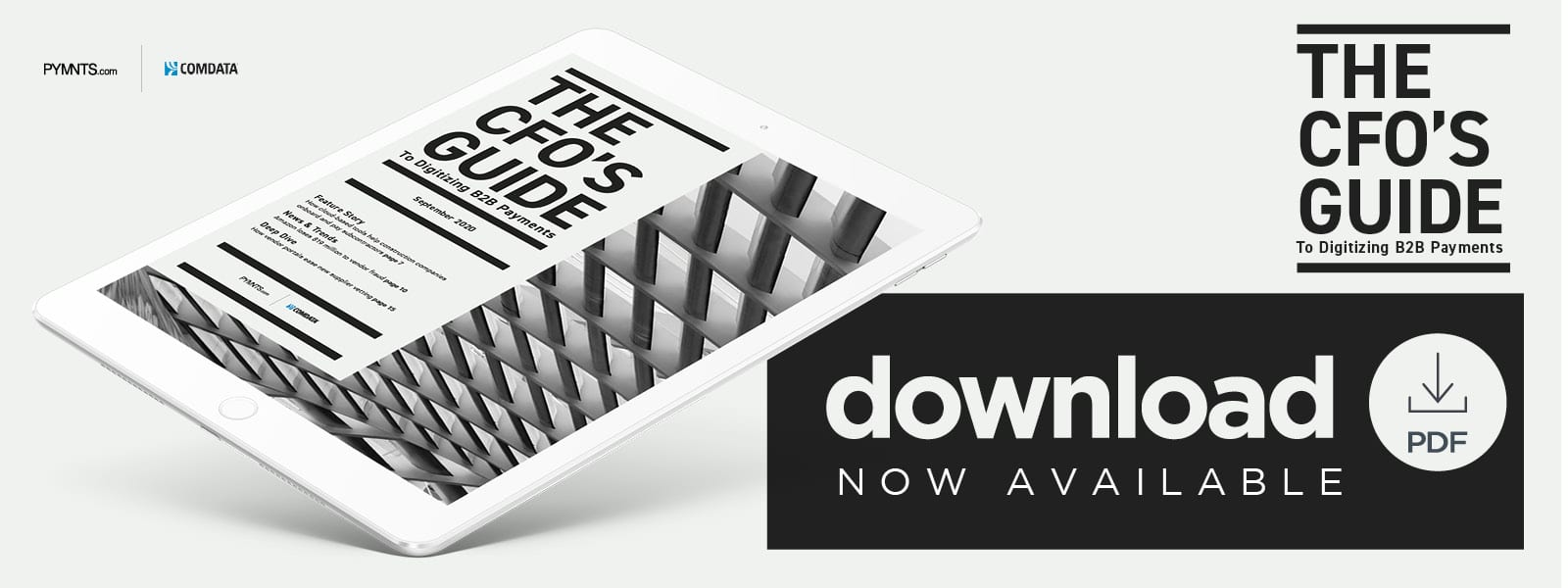Deep Dive: How Onboarding Portals Ease Vendor Data Gathering And Management

Vendor onboarding is a necessary and often challenging step in forging business relationships.
Corporate buyers must gather data to ensure that potential suppliers can meet their procurement needs, but their research does not stop there. They also need to collect and verify vendors’ details to comply with anti-crime regulations, adhere to tax reporting requirements and deliver convenient digital payments to these suppliers.
Smooth B2B operations depend on robust data gathering, but many companies rely on manual methods to collect information and complete supplier enrollment. This can make the process more cumbersome and introduce errors if some facts are recorded incorrectly or not at all. This month’s Deep Dive explores how digital onboarding portals can ease these frictions.
Keeping Up With Data Demands
Corporate buyers must initially research potential partners to ensure that they are operationally stable and can maintain steady flows of goods and services. Missed due dates can prevent buyers from meeting their own client commitments, after all. Carefully vetting new suppliers thus often involves examining details such their credit and performance histories.
Corporate buyers that have gathered enough information on potential business partners then need to answer to regulators. The procuring parties must ensure that suppliers are aboveboard and that engaging with them will not support criminal enterprises. This requires buyers to abide by various know your customer (KYC), anti-money laundering (AML) and other anti-financial crime policies to ensure vendors are not involved in illicit activities or on sanctions lists — all of which entails collecting and verifying vendor details.
Preventing crime also includes thwarting tax fraud, and companies must obtain certain details to fulfill their tax reporting responsibilities. Buyers must acquire documents, such as W-8 or W-9 tax forms and information like taxpayer identification numbers (TINs) from vendors, then validate their details to meet tax obligations. Corporate buyers that fail to adhere to these regulatory requirements could face audits, fines and tax withholdings.
The next step for businesses that have satisfied their own data gathering requirements and answered their governments’ questions is acquiring details that allow them to make swift, digital payments. Companies may be eager to ditch paper checks and other manual methods from their B2B payment flows, as 24 percent of accounts payable (AP) professionals say that such processes worsen vendor relationships. Switching to digital transactions often necessitates more supplier details, however, as companies need to verify vendors’ bank account information to issue electronic payments made via automated clearinghouse (ACH), for example.
Digital Fixes
Many companies lack digital methods for gathering and managing this information, with 49.5 percent of AP departments saying they conducted vendor enrollment entirely or partly via manual methods in 2019. Some firms employed digital approaches for part of this process; 72.1 percent of surveyed organizations used digital means to help them gather suppliers’ credit information, and 68.4 percent obtained information digitally about suppliers’ past performances, for example.
The continued use of manual-heavy procedures causes friction, however. Employees must spend considerable time sorting through documents and reaching out to suppliers for additional details when they find information gaps, for example. Fifty-two percent of organizations struggled with “inconsistent” vendor information, according to a 2019 study. Such issues could require making phone calls or sending emails to vendors for clarification to resolve the problem.
Not all companies manage to keep up with their data gathering needs. One survey that polled 1,040 U.S. businesses found that only 30.7 percent checked suppliers’ ownership structures, while 26.7 percent confirmed that suppliers were not on international sanctions’ lists. Tools that help companies quickly obtain relevant details might help boost these figures, however. Fifty-eight percent of business leaders reportedly said data insights could improve their regulatory compliance and help them identify fraud risks, for example.
Supplier enrollment portals could help. These software solutions enable vendors to go through onboarding processes without needing buyers’ help, saving time for both parties. They also guide suppliers through filling in the various information fields. Having vendors enter their own details — rather than assigning that task to buyers’ employees — can also reduce the risk of errors and provide greater security than asking vendors to send sensitive payment details via email or other channels. Onboarding portal tools can also automatically validate the entered information, making it faster and easier to check suppliers against sanctions lists and confirm their TINs and addresses.
Vendor portals are helpful for not only receiving details but also storing and accessing them later. These portals provide centralized locations that allow buyers’ AP teams to view vendor information and keep accompanying records about invoices, payment histories and related details. Having all of this data in one spot can make it easier for employees to find what they need. Staff members might use the portals to view new invoices, confirm upcoming payments and then pull up suppliers’ payment details to ensure the transactions are delivered.
Providing smooth, compliant B2B payments often requires a large amount of data collection and management, but software solutions can reduce some of this burden. Corporate buyers may find that portals offer key assistance in helping them meet internal and regulatory requirements while also extending convenient, digital payment experiences.

